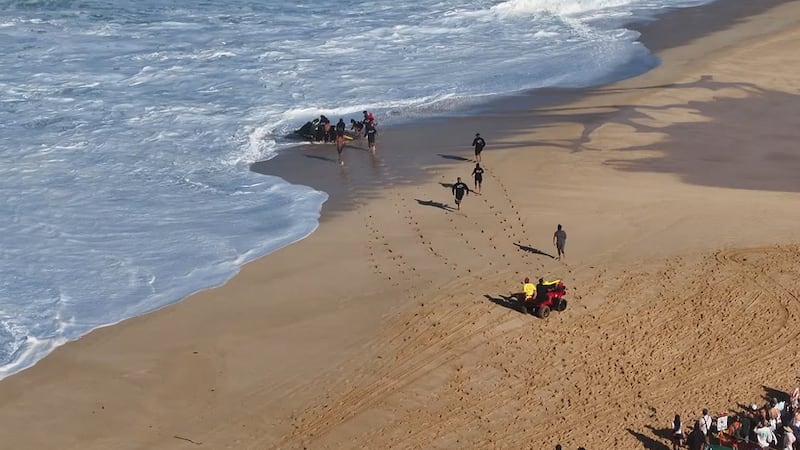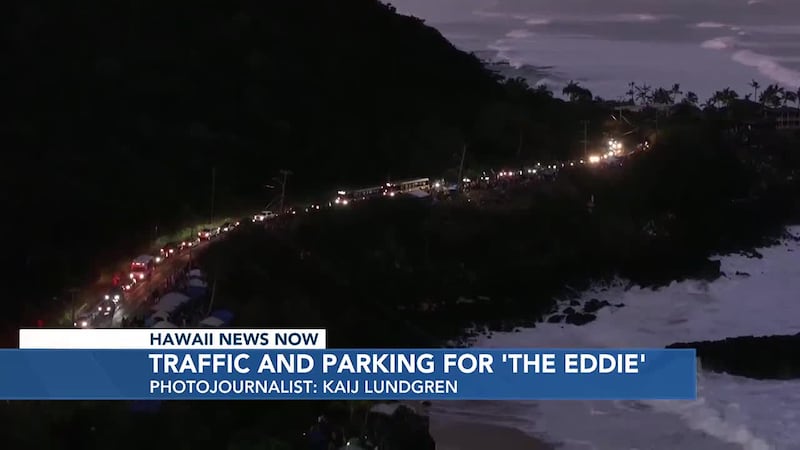New Maui police statement reveals county protocol violations in Lahaina fire victim recovery
Concerns raised by the department’s former morgue contractor cast doubt on whether all the ashes families received are those of their loved ones.
HONOLULU (HawaiiNewsNow) - After weeks of HNN Investigates asking questions, the Maui Police Department recently provided information that shows the department didn’t always follow county protocols while recovering remains of people who died in the Lahaina fire.
However, the department insists information it gave families is accurate.
This comes after MPD’s former morgue contractor told HNN Investigates the process was so mismanaged he can’t guarantee all the ashes families received are their loved ones.
The Maui Police Department confirmed identification numbers — used to keep track of who’s who — weren’t issued until after victims had been moved at least two different times.
Department leadership also admits scene photographs and GPS coordinates weren’t obtained in every case. They also acknowledge instances where body bags were not used to recover decedents from their final resting place.
Since Oct. 3, HNN Investigates has been asking if officers assigned to recover the remains of Lahaina fire victims followed proper protocols and procedures in accordance with Maui County’s Mass Fatality Operation Plan.
In a statement, a Maui Police Department spokesperson responded, “We utilized best practices from our federal partners who worked with us, specifically the FEMA USAR teams.”
The statement went on to say, “We were also privileged to have the Department of Defense DOD team.”
According to MPD’s preliminary after-action report, FEMA’s Urban Search and Recovery teams didn’t arrive on island until late the afternoon of Aug. 11, 2023 — three days after the fire. By that time, the vast majority of the 102 recoveries had already been made by MPD.
That same report states, there were approximately “90 recoveries done in the first three days.”
Meanwhile, records show the DOD team didn’t arrive “until the middle of August.”
The department’s former morgue contractor told HNN Investigates the alleged missteps occurred in the three days before Maui’s federal partners arrived.
Greyson Abarra is the owner and morgue operations director at Grey Tech LLC. For more than a decade, his company was contracted to provide post-mortem services for the Maui Police Department. The day after the fire, MPD leadership called Abarra to action.
He says when he arrived at the Lahaina Civic Center the morning of Aug. 9, 2023, he was directed to a truck with the remains of six people in the back.
“Bodies were not in post-mortem pouches (body bags),” he said.
Abarra went on to say, “we had to put them into proper post-mortem pouches.”
HNN Investigates
While the department didn’t confirm numbers, it admits officers didn’t always use body bags during the earliest phase of the recovery process, saying, “disaster pouches were not yet available in sufficient quantity in Lahaina” and that “initial discovered bodies had to be relocated from the area” to protect the remains from exposure and trespassers entering the burn zone.
Abarra says many of the recovery processes and procedures critical to accurately documenting the location of a person’s death and keeping those remains separate so they’re not lost or confused with other sets of remains weren’t followed.
In addition to police officers, MPD now confirms officer recruits, still in training, were ordered to do the work — tasks that would typically be reserved for experienced recovery teams like Grey Tech and anthropologists.
Abarra said, “A lot of that after-action report refers to a lot of leadership and unified command, but there wasn’t any until way later.”
According to the County’s Mass Fatality Operations Plan, at the time of discovery, each person who perished needed to be assigned a unique ID number; have photographs and GPS coordinates taken where they were found; and their remains placed in a post-mortem pouch for transport to the morgue for an autopsy.
Abarra said, “None of this information was available beforehand — prior to the recovery and triage of these cases — which made everything extremely difficult to untangle.”
Another major issue: Abarra said decedents weren’t assigned a unique morgue ID number at the location where their remains were discovered.
He says that unique identifier is critical, particularly in mass casualty events, because it allows for accurate tracking and identification of victims, so remains can be reunited with the correct family.
Records show fire victims were moved at least twice prior to having that ID number assigned. First, they were first transported from the place they were found to a centralized pick-up area. From there, they were taken to a forensic facility.
“I had to assign these unique ID numbers as I was imaging with the hospital,” said Abarra.
MPD confirmed Abarra’s claim, telling HNN Investigates fire victims were not given a case number until they were X-rayed.
Abarra says there were cases where scene photographs were never obtained, adding ones that were weren’t always helpful.
He also said GPS coordinates weren’t recorded for every victim.
RELATED STORIES:
- Mishandling of human remains: Local forensic company breaks silence on Lahaina disaster response
- Maui PD won’t discuss allegations it owes forensic morgue contractor more than $270K
- Watchdog group demands answers from MPD chief amid reports department mishandled Lahaina victims’ remains
Once officers started using post-mortem pouches, he says he’d find addresses or cross streets written on some of the bag instead of specific coordinates.
In an interview obtained as part of the Attorney General’s wildfire investigation, an MPD detective described how the recovery process was conducted in the days immediately following the fire.
“I don’t know if I told it in the station, or if I said it on the radio, but it came out, and basically said like, ‘Hey, if you guys find something, call the location, time, whether or not you think it’s male or female on the radio. So we can have a record of that on the radio,’” said Det. Matt Bigoss.
“Then I had told the guys who were with me, ‘Hey, we’re going to put them in — you know, recovery, body, remains, whatever, find it, put it in the bag. On the outside of the bag, write something to denote the date, the time, the location.’ Because at this point, we came to the conclusion — we basically needed to recover them. And take them to a centralized location so that it would be easier for the morgue people to pick them up.”
That detective went on to say, “I mean, there were some that were missed for sure. But for the most part, the guys were pretty good about taking pictures. And documenting. And writing notes about what they saw.”
Abarra said, “The post-mortem chambers have a lot of moisture and condensation. And also provided another challenge. If you’re not using something permanent, the markings on these pouches could be lost.”
Abarra provided pictures showing examples of information written on some of the body bags that was difficult to read because it was either smudged or had rubbed off.
These are some of the issues MPD touched on in its preliminary after-action report.
“Recommendation 20″ was to, “continue death investigation education for MPD officers, as some of the initial documentation and photography could have offered more context with better coverage and details.”
Abarra says he immediately spoke up, alerting department leadership to the problems. He says he even provided them with a copy of Maui County’s Mass Fatality Operations Plan — a step-by-step guide on what needed to be done.
When asked about the county’s response, he replied, “I don’t think the problem was understood.”
Abarra says he doesn’t blame the officers and officer recruits for what happened, saying they were only doing what they’d been ordered to do.
“You should have never been put in that situation,” he said. “Sorry you had to go through that.”
MPD has acknowledged there were mix ups. Its preliminary after-action report states, “early on it was discovered that some body bags contained commingled remains. In other cases, one individual may have been recovered in more than one body bag.”
The report went on to say, “A subset of fragmented bone remains could not be linked to only one person and were commingled with multiple non-related individuals and were labeled as group remains.”
At the time the report was written, those remains were being kept at the morgue until the department could figure out what to do with them.
We asked MPD leadership where they are today. We were told the remains are still in the department’s care and are undergoing continuing laboratory analyses.
Below is MPD’s full statement that was sent to HNN Investigates:
MPD Statement by HNN on Scribd
Copyright 2024 Hawaii News Now. All rights reserved.














